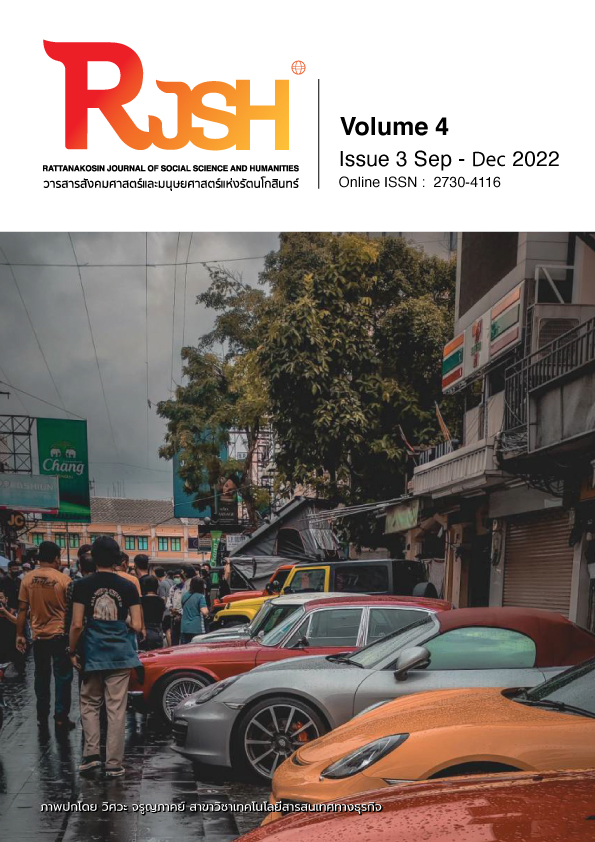Women's Images in Fashion Magazines of the United States and Taiwan: A Cross-Cultural Instruction Lesson Plan
Main Article Content
Abstract
Young people are greatly influenced by pop culture, with magazines serving as one of the primary sources of text and images. The purpose of the research is to learn how pop culture portrays women in society, and to compare popular magazines in Taiwan and the United States from the perspectives of media symbolism, gender studies, and cross-cultural studies, to analyze the looks and language symbols in these magazines, to investigate how the media reproduce the images of women in both places, and to develop a cross-cultural teaching program appropriate for overseas Chinese students.
This research will develop an intercultural communication and media literacy curriculum for intermediate- to advanced-level Chinese heritage students in US schools. The lesson plan will use popular magazines from Taiwan and the US as a medium and be divided into three tiers to assist students in developing cross-cultural and media literacy skills from the ground up: (1) Using the Taiwanese magazine Bella to introduce Chinese learners to the representation of women in the Chinese context and compare it to Vogue US to help students analyze differences and cultural contexts; (2) Using real-world examples from popular culture to explain how the media employs words and images to define the appearance of women and older women as well as how myths pervade society through the media; and (3) Promoting healthy self-esteem and media literacy among students. In order to help students developing media literacy, this project integrates popular culture with realistic resources to improve students' understanding of other cultures.
Article Details
The content within the published articles, including images and tables, is copyrighted by Rajamangala University of Technology Rattanakosin. Any use of the article's content, text, ideas, images, or tables for commercial purposes in various formats requires permission from the journal's editorial board.
Rajamangala University of Technology Rattanakosin permits the use and dissemination of article files under the condition that proper attribution to the journal is provided and the content is not used for commercial purposes.
The opinions and views expressed in the articles are solely those of the respective authors and are not associated with Rajamangala University of Technology Rattanakosin or other faculty members in the university. The authors bear full responsibility for the content of their articles, including any errors, and are responsible for the content and editorial review. The editorial board is not responsible for the content or views expressed in the articles.
References
李衣雲(2008)。1990年代台灣哈日風的基礎──日本大眾文化的積累作用。臺灣風物第58卷2期,頁135
唐筱恬(2009)。歐美派、日系風:台灣女性時尚雜誌的產製。國立臺灣師範大學大眾傳播研究所碩士論文,台北市。
符煜君(2021)。女人三十的正名傳?《乘風破浪的姐姐》的女性形象建構。國立臺灣大學新聞研究所碩士論文,台北市。
楊芳枝(2012)。流行文化裡的性別。性別向度與台灣社會(第二版),第五章。巨流圖書公司。
鄧慧純(2007)。三十拉警報!?-日本趨勢劇中的「三十女人」論述分析。淡江大學大眾傳播學系碩士班碩士論文,新北市。
簡瑛瑛(1998)。何處是女兒家。聯合文學。
簡瑛瑛(2021)。從生命書寫到藝術越界:性別族群認同‧視覺文化再現。台灣:典藏文創。
Barwell, I. (1990). Feminine Perspectives and Narrative Points of View. Hypatia, 5(2), 63–75.
Berger, J.(2011)。《觀看的方式》 (Ways of seeing),吳莉君譯。臺北市:麥田。原著出版年:1973年
Bossert, J. (2016). Voguing Gender: How American Vogue Represented and Constructed Women’s Roles from 1965-1974 [Thesis]. Rochester Institute of Technology.
Chang, J.-S. (2004). Refashioning Womanhood in 1990s Taiwan: An Analysis of the Taiwanese Edition of Cosmopolitan Magazine. Modern China, 30(3), 361–397.
Chi, C.-W., & Baldwin, C. (2004). Gender and Class Stereotypes: A Comparison of U.S. and Taiwanese Magazine Advertisements. Race, Gender & Class, 11(2), 156–175.
Chiang, Lan-hun Nora. (2000) Women in Taiwan: Linking economic prosperity and women‘s progress. In Louise Edwards, Mina Roces (Eds.), Women in Asia : Tradition, modernity and globalisation (1st ed.). Routledge.
Fang-Chih, Irene Yang (Feb 2004). International Women's Magazines and the Production of Sexuality in Taiwan. Journal of Popular Culture; Oxford Vol. 37, Iss. 3: 505-530.
Glocker, M. L., Langleben, D. D., Ruparel, K., Loughead, J. W., Gur, R. C., & Sachser, N. (2009). Baby Schema in Infant Faces Induces Cuteness Perception and Motivation for Caretaking in Adults. Ethology: formerly Zeitschrift fur Tierpsychologie, 115(3), 257–263.
Lee, Myoung-Hee (2004). Influence of Hairstyle on Women's Professional Image. International Journal of Costume and Fashion, 4 (2), 56-65.
Lee, Myoung-Hee. (2007). The Male Perceiver's Image Evaluation and Preference of Women's Hairstyle. Journal of the Korea Fashion and Costume Design Association, 9(2), 127-138.
Lin, CL., Yeh, JT. (2009). Comparing Society’s Awareness of Women: Media-Portrayed Idealized Images and Physical Attractiveness. J Bus Ethics 90, 61.
Lorenz, K. (1943). Die angeborenen Formen moeglicher Erfahrung. Z Tierpsychol. 235–409.
Marita Sturke & Lisa Cartwright(2012)。《觀看的實踐—給所有影像世代的視覺文化導論》 ( Practices of Looking: An Introduction to Visual Culture),陳品秀譯。臺北市:臉譜。原著出版年:2001年。
Mesko, N., Bereczkei, T. (2004). Hairstyle as an adaptive means of displaying phenotypic quality. Human Nature 15, 251–270. https://doi.org/10.1007/s12110-004-1008-6
Millard, J.E., Grant, P.R. (2006). The Stereotypes of Black and White Women in Fashion Magazine Photographs: The Pose of the Model and the Impression She Creates. Sex Roles 54, 659–673.
Novelli, D. (2017). Face à la blanchité : le corps [blanc] féminin convoqué par Vogue [Paris-Brasil] au XXIe siècle. Sociétés, 137, 41-48.
Rakow, L. F., & Wackwitz, L. A. (2004). Feminist communication theory: Selections in context. Thousand Oaks, Calif: Sage.
Roland Barthes (1977). Image—Music—Text. Hill and Wang: New York, 25-26.
Roland Barthes. (1998)。《流行體系》(Système de la mode),敖軍譯,臺北:桂冠。原著出版年: 1967年。
Roland Barthes. (2002)。《神話學》(Mythologies),許薔薔、許綺玲譯,臺北:桂冠。原著出版年:1957年
Sakamoto, K. (1999). Reading Japanese women’s magazines: the construction of new identities in the 1970s and 1980s. Media, Culture & Society, 21(2), 173–193.
Shu‐Ching Lee (2011). Negotiating for change: women’s movements and education reform in Taiwan. Gender and Education, 23:1, 47-58.
Sternadori, M.M., & Hagseth, M. (2014). Fashionable Feminism or Feminist Fashion. Media Report to Women. University of Michigan Press.
Yang, F. I. (2007). Beautiful-and-Bad Woman: Media Feminism and the Politics of Its Construction. Feminist Studies, 33(2), 361–383.
Yang, W.-S., & Yen, P.-C. (2011). A Comparative Study of Marital Dissolution in East Asian Societies: Gender Attitudes and Social Expectations towards Marriage in Taiwan, Korea and Japan. Asian Journal of Social Science, 39(6), 751–775.


